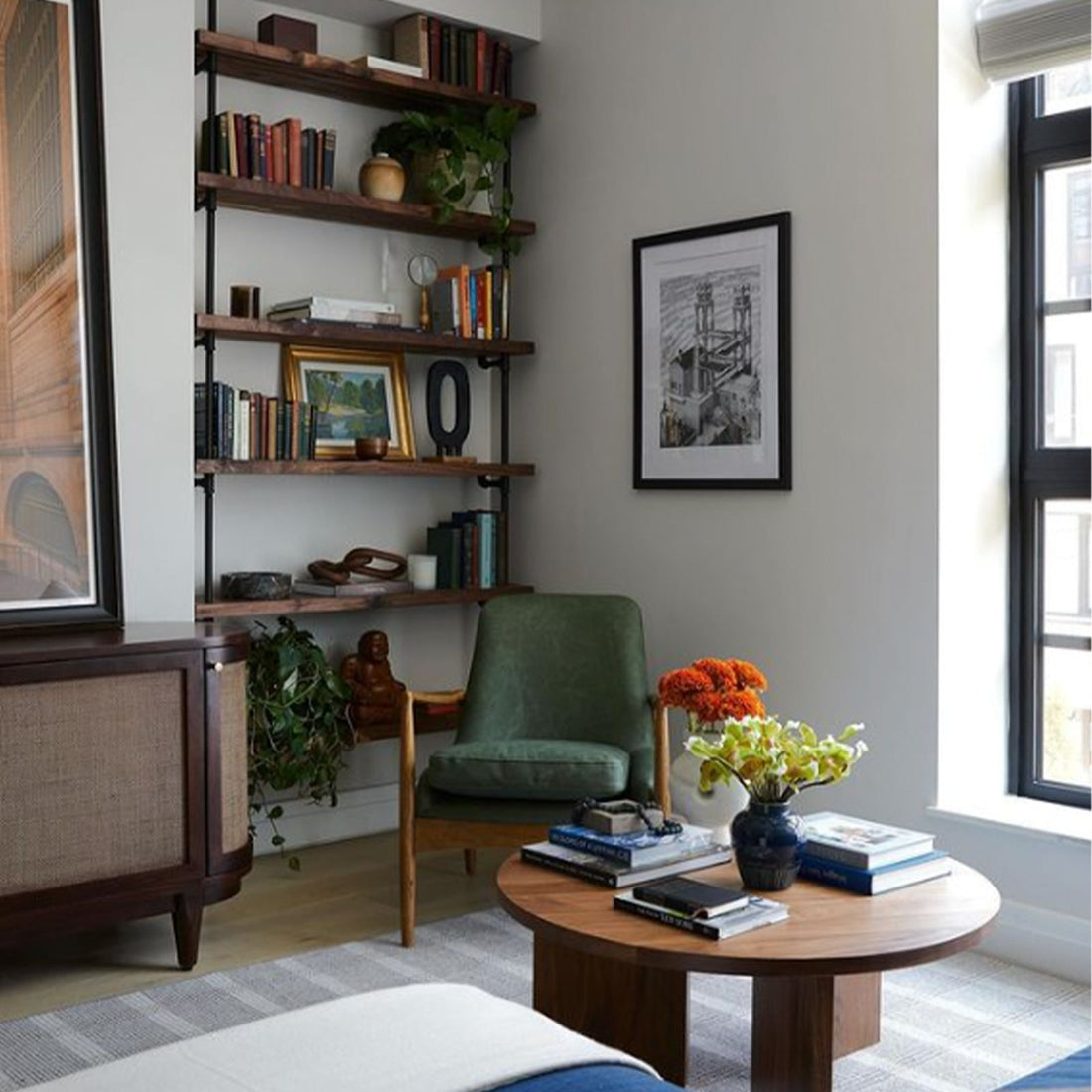When installing a Soil & Oak custom shelving unit, one of the most important steps is anchoring it properly to ensure stability and safety. Without proper anchoring, heavy shelves could risk tipping over, especially in areas with children or pets. While there are several methods to anchor your unit, the best option depends on the type of wall you're working with, the weight of the shelving unit, and the aesthetic you want to achieve. Let's explore four popular options for anchoring your custom Soil & Oak shelf securely to your wall.
1. Adding Blocking Between the Studs (Ideal for Strong Anchoring)
The most secure method of anchoring a shelving unit is to open up the wall and add "blocking" between the studs. Blocking refers to a sheet of plywood or wood placed between the studs to create a sturdy surface for mounting your shelving unit. This option is commonly used when installing heavy items, like cabinets or shelving, that require additional support.
However, this method isn’t always feasible because it involves opening the wall, which can be time-consuming and invasive. If you're comfortable with the idea of cutting into drywall and adding blocking, this is the strongest method to secure your shelving unit.
2. Mounting to a Wood Strip Over Drywall
If cutting into your walls isn’t an option, another excellent alternative is to attach a wooden strip over the drywall. The wood strip should be secured directly to the studs, ensuring that the shelving unit will have a strong foundation. Once the wood is in place, you can then attach the rails of your shelving unit to the wood.
This method offers some creative flexibility in terms of aesthetics. The wood strip can be painted to match your existing décor, stained for a more natural look, or even wallpapered to blend in with your space. For example, a striking contrast can be created by painting the wood white over a subtle wallpaper design, adding both functionality and a touch of style to your room.
3. Converting to a Standing Unit (No Wall Anchoring Required)
If you're looking for a solution that doesn’t involve anchoring to the wall at all, consider converting your custom shelving unit into a standing unit. This is an excellent option for renters or anyone who doesn’t want to make permanent changes to their walls.
For this option, simply allow the shelving unit to rest on the floor and, if desired, drop two of the outer legs to rest on the counter or a solid surface for added stability. This method minimizes the intrusion of wall fixtures and provides a flexible, non-permanent solution to secure your shelving unit.
4. Using Hollow Wall Fasteners (If Anchoring to the Wall is Necessary)
If you cannot use studs and your walls are hollow (like many drywall installations), the final option is to use hollow wall fasteners, such as toggle bolts. This is a commonly used technique for anchoring units to walls where studs aren’t available in the ideal locations.
You’ll typically need to account for the combined weight of the shelves and items you plan to store. For example, a glass shelf unit can weigh about 60 pounds, with the additional weight of the rails adding another 15-20 pounds. Toggle bolts are generally strong enough to hold this weight, but the key concern with hollow wall fasteners is whether the wall itself can bear the load. The risk here is not necessarily that the bolts will fail, but that the wall may not be sturdy enough to hold the weight of the unit.
If you decide to use toggle bolts, make sure to secure at least one of the rails to a stud. This can help spread the weight and reduce the risk of wall damage. If you can map out the location of the studs, aim to align the shelving unit rails with them for optimal security.
Proper Anchoring Is Essential
When anchoring a shelving unit, it’s essential to ensure it is securely attached to more than just drywall. The weight of the unit—combined with the potential contents—requires solid support, such as studs or blocking between the studs. If studs aren't conveniently located, consider using a wood strip or hollow wall fasteners to anchor the unit safely. If you're uncertain about the strength of your wall or how to best secure the unit, don't hesitate to consult a professional.
By following these methods, you can enjoy the beauty and functionality of your Soil & Oak custom shelves without worrying about its stability. Whether you choose to drill into the studs, add a decorative wood strip, or convert the unit to a standing piece, you'll be able to enjoy your shelves for years to come.
